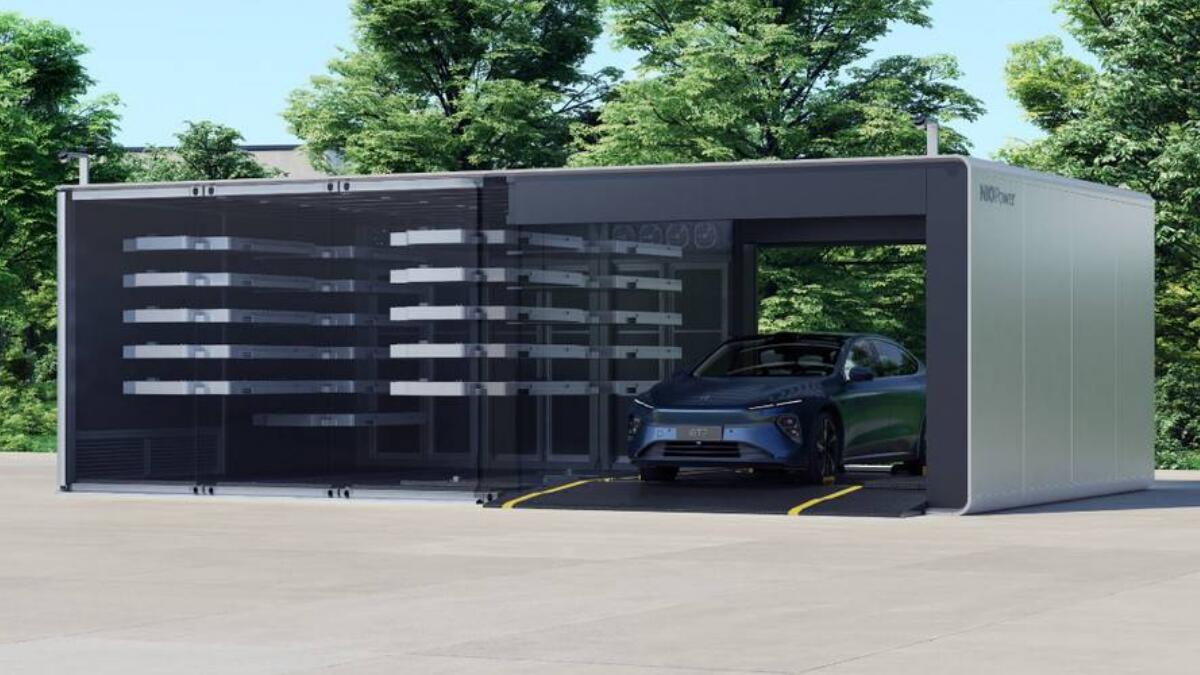Nio's battery swap stations in China have served a cumulative total of more than 24 million times today, averaging more than 50,000 services per day.

(Image credit: Nio)
Nio (NYSE: NIO) has reached a new milestone in the number of battery swap stations in China, as it continues to build its iconic replenishment facility.
Nio today put five new battery swap stations into operation in China, bringing the total to 1,500, 410 of which are located along highways, according to data released today by the electric vehicle (EV) maker.
At the same time, Nio's battery swap stations in China have accumulated more than 24 million services today, averaging more than 50,000 services per day.
On average, a vehicle leaves Nio's battery swap stations with a fully charged battery every 1.8 seconds, the company said, adding that more than 60 percent of Nio vehicles' power comes from these stations.
Currently, 72.44 percent of Nio owners can find a battery swap station within 3 kilometers of their home or office, Nio said.
Here's a video Nio shared on its mobile app about the historical changes in the number of its battery swap stations.
In addition to providing Nio owners with fully charged batteries, battery swap stations are small, distributed energy storage sites.
Nio's 1,500 battery swap stations can store a total of about 1.36 million kWh of energy, saving about RMB 300 million yuan a year in electricity costs in China, considering that electricity costs are lower at night, the company said.
These stations can also participate in load regulation on the grid, helping it accommodate more electricity generated from clean energy sources such as wind and photovoltaics, Nio said.

Nio allows consumers to purchase vehicles that include batteries, or rent batteries without buying them. In addition, the company allows owners who have purchased or leased a 70-kWh or 75-kWh standard-range battery pack the flexibility to upgrade to a 100-kWh long-range pack.
To date, Nio has provided more than 80,000 flexible battery upgrades, it said.
Nio also put 10 supercharging stations into operation today, bringing the total to 1,450, offering 7,156 charging piles. It added an additional 2 destination charging stations today, bringing the total to 1,277, offering 9,048 charging piles.
Nio completed its first battery swap station in Shenzhen on May 20, 2018. Its initial 200 battery swap stations are first-generation facilities, with its first second-generation battery swap station coming into operation on April 15, 2021.
Nio's third-generation battery swap station, unveiled at the Nio Day 2022 event on December 24, 2022, can store up to 21 battery packs, up from 13 in its previous generation and five in the first generation of the facility. These latest-generation stations began operations on April 12.
Nio announced plans late last year to add 400 battery swap stations by 2023, though that plan was raised to 1,000 on February 21.
William Li, Nio's founder, chairman and CEO, said at the time that the company would further accelerate the deployment of battery swap stations, with a goal of having more than 2,300 battery swap stations in China by the end of 2023.
The company will deploy about 100 battery swap stations in June and more quickly thereafter, which will help boost sales, Li said during Nio's first-quarter earnings call on June 9.
Nio has added a total of 52 battery swap stations so far this month, according to data monitored by CnEVPost.
Nio added a battery swap station in the Netherlands on June 22, bringing the number of such stations in the country to six.
To date, Nio has 17 battery swap stations and 8 charging stations in Europe.




